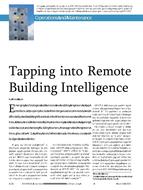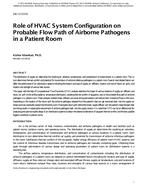This paper reviews literature that reports investigations of residential ventilation and indoor air quality. Two important residential pollutant classes, volatile organic compounds and radon, are examined. A companion paper (Hadlich and Grimsrud 1999) examines moisture and combustion pollutants. Control strategies recommended from the review include appropriate building design to prevent or limit the sources of the pollutants within the space, proper operation and maintenance to prevent adverse conditions from developing during the building’s life and appropriate use of ventilation. The characteristics of these pollutant sources suggest that ventilation systems in residences should have several properties. They should have the extra capacity available to reduce short bursts of pollution, be located close to the expected source of the contamination, and be inexpensive. Mitigation of radon is technically a major success using a form of task ventilation. Whole-house ventilation is, at best, a secondary form of control of excess radon in residences.
Units: SI
Citation: Symposium, ASHRAE Transactions, vol. 105, pt. 2, Seattle 1999
Product Details
- Published:
- 1999
- Number of Pages:
- 15
- File Size:
- 1 file , 120 KB
- Product Code(s):
- D-7446


